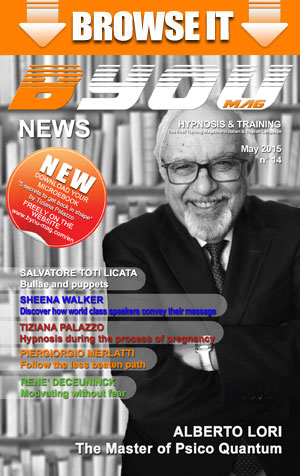Outdoor training and emotions by Silvia Minguzzi
19 May, 2014
Let’s begin with a short test to check your skills with a self-organizational in managerial and leadership tasks:
- Usually do you have enough confidence in yourself?
- Broadcast of course trust to the people you meet?
- Are you sociable with others people?
- Do you expose yourself?
- Do you do a bit of soul searching yourself?
- Do you admit your mistakes?
- Are you captivating?
- Do you listen to others people?
- Are you responsible for your actions?
- Do always you want to learn?
These are some basic points to have good leadership, which requires you to put at the center of interest the person and his direct involvement in organizational activities in general, and training in particular. The business realities are taking a growing awareness of the importance of human resources for the welfare and success of the company and this is affecting the selection of training interventions addressed to them. The new methodologies explore non-traditional forms of training, one of these is the methodology of outdoor training that represents the highest level of involvement and centering on the participant.
Outdoor Training is an experiential course designed to anticipate, respond or to resolve a specific organizational situation. In this type of activity, the emotional involvement, although combined with traditional methods, it is very strong and the training activity derives the maximum benefit. This type of activity, often embedded within broader and long training sessions, encourages the participants’ attention on group dynamics contributing significantly to the development of processes of team building.
Outdoor Training i.e. training is not in place but in places normally delegated to holiday and leisure, enables significant advantages compared to traditional methods.
Firstly, the training is carried out focusing on the fun and relationships, it is seen as a fun/reward by participants and can help to improve the performance of the team. Secondly, Outdoor Training is used as an incentive from the company that can to include in the “training package” all the costs that are normally classified as company benefits, such as relocation, living, any extras, rides, shows, etc.. Finally, people get a real infusion of energy in the days immediately following the event and they are powered by it, the acquired skills and learning are most commonly used in
the workplace because its have learned with a non-traditional manner.
At this point we can define the OT in a more organic way as a training model that aims to give to the participants a “experiential learning”: a subjective experience and relationships in which people, starting with the relationship with oneself, improve the skills of team building and team working.
RECEIVE THE FREE MATERIAL, WRITE TO SILVIA (add the title of the topic) on: silvia@accademiaintelligenzaemotiva.it
Silvia Minguzzi
http://www.silviaminguzzi.it
Related Posts
-

Fire Your Monkey Mind! by Dana Pharant
-

How to acquire the references by Cesare D'Ambrosio
-

Assertive comunication 2 by Piergiorgio Merlatti
-

The Emotional Intelligence Goes On Holiday by Silvia Minguzzi
-

Assertive comunication by Piergiorgio Merlatti
-

The Archaic Chain: hypnosis is a intimate relationship by Marco Pacori
-

Mental Sport Coaching by Salvatore Toti Licata
-

Bryan Smith' Quotes by Bryan Smith
-

ThatConnect MUSIC by Clinton Bishop
-

More than Jazz ... di Tal Babitzky



